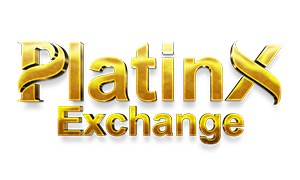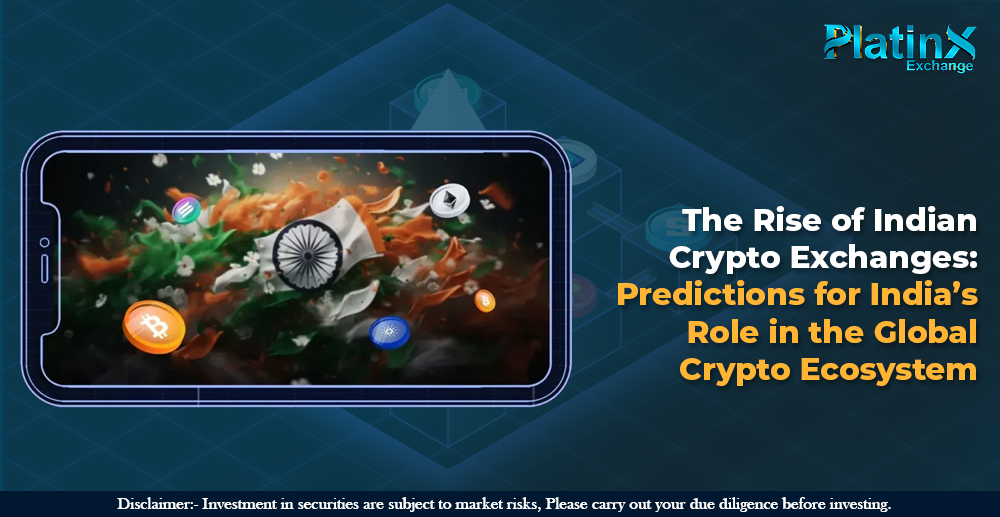Introduction
India, a country known for its robust IT infrastructure and entrepreneurial zeal, is rapidly becoming a formidable force in the world of cryptocurrency. From the early skepticism surrounding digital currencies to a growing culture of adoption, India’s crypto journey has been nothing short of transformative. Today, the country is witnessing the meteoric rise of indigenous crypto exchanges like Platinx Exchange, which are positioning themselves as serious contenders in the global crypto arena.
With a large, tech-savvy youth population and an increasing institutional interest, India is poised not only to become a leading participant in the global crypto ecosystem but also a driving force in shaping its future. This blog explores India’s current crypto landscape, the factors propelling its growth, its global impact, and how Indian exchanges like Platinx Exchange are adapting to overcome key challenges.
India’s Current Standing in the Global Crypto Market
Regulatory Landscape and Market Dynamics
India’s relationship with cryptocurrency has evolved from skepticism to cautious optimism. While regulatory clarity remains a work in progress, the government has shown growing interest in blockchain technology and digital assets. The introduction of a 30% tax on crypto gains and 1% TDS on transactions in 2022 was initially seen as restrictive, but it also marked a step towards formalizing crypto activity in the country.
Despite these regulatory complexities, India consistently ranks among the top countries in terms of crypto adoption. According to the Chainalysis 2023 Global Crypto Adoption Index, India was ranked #1 globally, reflecting the immense grassroots interest in digital assets.
User Base and Trading Volumes
India is home to over 100 million crypto users, the largest user base in the world. Young investors between the ages of 18 and 35 are driving the demand, lured by the promise of financial inclusion, decentralized finance (DeFi), and an alternative investment avenue.
Trading volumes on Indian exchanges have seen intermittent fluctuations due to policy announcements but remain robust. What’s notable is the increasing trust in homegrown platforms like Platinx Exchange, which prioritize security, user education, and transparent operations.
Trust in Indigenous Platforms: The Rise of Platinx Exchange
The emergence of Platinx Exchange, a secure Indian crypto exchange, marks a new chapter in India’s crypto evolution. Designed to cater to the unique needs of Indian traders while adhering to global standards, Platinx offers a seamless user experience, ironclad security protocols, and a vision rooted in empowering the average investor. As Indian users look for platforms that offer reliability and regulation-readiness, Platinx Exchange is becoming a name synonymous with trust.
Key Growth Drivers for India’s Crypto Ecosystem
Tech-Savvy Youth Population
India boasts the largest population of Gen Z and millennials globally. This digitally native demographic is naturally inclined toward innovations like cryptocurrency and blockchain. With high smartphone penetration and affordable internet, accessing crypto platforms has become incredibly easy for this segment.
As financial literacy grows, so does the appetite for alternative assets. Indian youth are not just investors—they’re also becoming crypto entrepreneurs, developers, and educators, creating a holistic ecosystem from the ground up.
Blockchain Adoption in Finance and Supply Chain
India is witnessing rapid blockchain adoption beyond cryptocurrencies. Major banks, logistics companies, and even government bodies are experimenting with blockchain for supply chain transparency, digital identity management, and secure financial transactions.
This growing integration creates a fertile ground for crypto’s acceptance, as tokens and smart contracts begin to power real-world use cases. Indian exchanges like Platinx are increasingly aligning themselves with such blockchain solutions, opening the door for long-term relevance and growth.
Institutional and Governmental Involvement
Institutional adoption is another game-changer. Banks, NBFCs, and fintech players are exploring crypto-backed lending, custody solutions, and DeFi applications. On the government front, India has begun experimenting with its Central Bank Digital Currency (CBDC)—the Digital Rupee—under pilot programs launched by the Reserve Bank of India.
This growing institutional interest indicates a future where crypto coexists with traditional finance. Platforms like Platinx Exchange are positioning themselves to be regulatory-compliant, ready to support both retail and institutional players in the evolving financial ecosystem.
Global Impact Predictions
India as a Blockchain Innovation Hub
India has the potential to become the next Silicon Valley for blockchain innovation. With its vast pool of software developers, blockchain startups, and investors, the country is well-placed to lead the next wave of Web3 applications.
From DeFi protocols to NFT marketplaces and Layer-2 scaling solutions, Indian developers are already making their mark globally. Exchanges like Platinx are supporting this by creating incubation programs, developer grants, and blockchain education initiatives, contributing to the ecosystem’s growth from the grassroots.
Indian Crypto Exchanges Going Global
The success of Indian crypto platforms doesn’t need to stop at national borders. Just as Indian IT firms like Infosys and Wipro gained global prominence, Indian crypto exchanges are now looking to expand overseas. Platinx Exchange, with its secure architecture and user-first design, is eyeing global markets—especially regions with large Indian diasporas.
By offering multilingual support, low transaction fees, and cross-border transfer solutions, Platinx and its peers could become key players in connecting emerging markets to global crypto finance.
India’s Influence on Global Crypto Regulation
India is increasingly being seen as a model for balancing innovation with regulation. If it succeeds in implementing a well-thought-out crypto framework, it could influence global standards. Through strategic alliances, participation in global forums like the G20, and innovation-driven leadership, India has the chance to help define the rules of tomorrow’s decentralized economy.
As regulatory frameworks evolve, Indian exchanges like Platinx will be instrumental in setting compliance benchmarks that can serve as blueprints globally.
Challenges and How Indian Crypto Exchanges Are Adapting
Regulatory Ambiguity
One of the biggest hurdles facing the Indian crypto ecosystem is regulatory uncertainty. While taxation has lent a degree of legitimacy, there’s still no comprehensive framework governing exchanges, assets, or user protection.
This unpredictability can deter investors and stifle innovation. However, platforms like Platinx Exchange are taking proactive steps—implementing rigorous KYC/AML policies, maintaining transparent financials, and aligning with international regulatory standards to build user confidence and prepare for future compliance.
Security Concerns
Crypto platforms around the world have faced hacks and breaches, which have shaken user trust. Indian exchanges are under similar pressure to ensure airtight security.
Platinx Exchange addresses this with multi-layer security infrastructure, cold wallet storage, and two-factor authentication as default. They also conduct regular security audits to stay ahead of potential threats, reassuring users that their assets are in safe hands.
Market Volatility and Investor Education
Cryptocurrency markets are notoriously volatile. Many Indian investors, new to this asset class, lack the necessary financial literacy to make informed decisions. Misunderstandings around crypto taxation, wallets, and trading strategies can lead to significant losses.
Recognizing this, Platinx Exchange has launched educational campaigns, blogs, webinars, and an academy platform to empower users with knowledge, ensuring they make sound financial decisions.
Conclusion
India stands at the cusp of a digital financial revolution, and cryptocurrency is a central pillar of that transformation. With the largest crypto user base in the world, increasing institutional interest, and government-backed blockchain initiatives, India is no longer a follower—it is becoming a leader in the global crypto movement.
The rise of secure, innovative, and compliance-focused Indian exchanges like Platinx Exchange signals a shift in the narrative. No longer are Indian users dependent on foreign platforms. Instead, they have access to reliable, locally developed alternatives that are tailored to their unique needs.
As we look toward a decentralized future, India’s role will be pivotal—not just in adoption but in innovation, regulation, and thought leadership. For those looking to explore the future of digital assets with trust and security, Platinx Exchange offers a gateway into this exciting new world.

